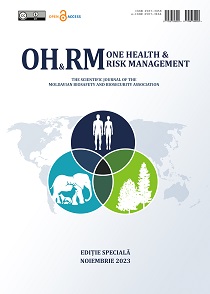Abstract
Introduction. Early hominin (Homo ex. gr. erectus) dispersals from Africa into western Eurasia took place during the Early Pleistocene. Evidence points to the presence of humans in Western Europe, specifically Spain, around 1.1-1.2 Ma and in the Transcaucasian region (Dmanisi) at approximately 1.8 Ma. Hominin remains in western Eurasia are predominantly found south of the Alpine Mountain Belt (AMB). The initial dispersal of Homo from Africa is linked to their ecological relationship with Early Pleistocene predators. However, scavenging alone doesn't fully account for the restricted distribution of Homo in comparison to carnivores. A climate shift around 1.0 Ma led to the extinction of warm-loving species, including carnivores, and simultaneously expanded the geographical range of archaic humans.
Aim. This study aims to identify ecological factors that influenced the distribution of archaic hominins in western Eurasia during the Early and Middle Pleistocene.
Material and methods. The research employed multivariate cluster analysis on regional faunal lists in western Eurasia, with a specific focus on hoofed mammals and primates. Cluster analysis was conducted using the Jaccard Similarity Index, which is designed for presence-absence data.
Results. Cluster analysis has revealed the Alpine Mountain Belt (AMB) to function as a zoogeographic boundary during the Early Pleistocene. It served as a protective barrier, safeguarding southern regions from climate deterioration. Notably, early hominins in Dmanisi might represent a relict population that endured in the Transcaucasian refugium following the decline of the Afrotropical zoogeographic realm, as exemplified by the fauna in Bethlehem. This suggests that the hominins of Dmanisi represent an isolated refugial population that persisted after the retreat of the Afrotropical realm to the south. Early hominin dispersals to Iberia are believed to have occurred through the Balkans and Western Europe. This movement was likely facilitated by a warm climate and the influence of the Gulf Stream. The emergence of the Movius Line (ML) during the Middle Pleistocene marks a new biogeographic boundary, indicating an increased density of hominin populations (Homo cf. heidelbergensis) in Western Europe during the Early and Middle Pleistocene. This biogeographic division aligns with the results obtained from faunal cluster analysis. The heightened population density in Western Europe could be attributed to its mild climate under the influence of the Gulf Stream, often referred to as a "wet climate refugium." Conversely, the sharp seasonality and continental climate north of the mountain belt in western Eurasia during the Early Pleistocene may have restricted early human dispersals. Notably, the seasonal drop in temperature below freezing point could have posed a significant limitation. The utilization of fire played a pivotal role in enabling hominins to move north of the AMB and adapt to lower temperatures.
Conclusions. The AMB functioned as a crucial ecological boundary during the early Homo dispersal, creating favorable conditions in southern Western Eurasia. Notably, seasonal temperature drops were the primary limiting factors for hominin dispersal in Western Europe during the Early Pleistocene. By around 1.0 Ma, Western Europe had transformed into a “wet climate refugia” for certain species. The strong continental climate to the east of the Movius Line (ML) posed a significant limitation for human dispersal.
|
 Views: 117|
|
Views: 117|
|
This work is licensed under a Creative Commons Attribution 4.0 International License.

